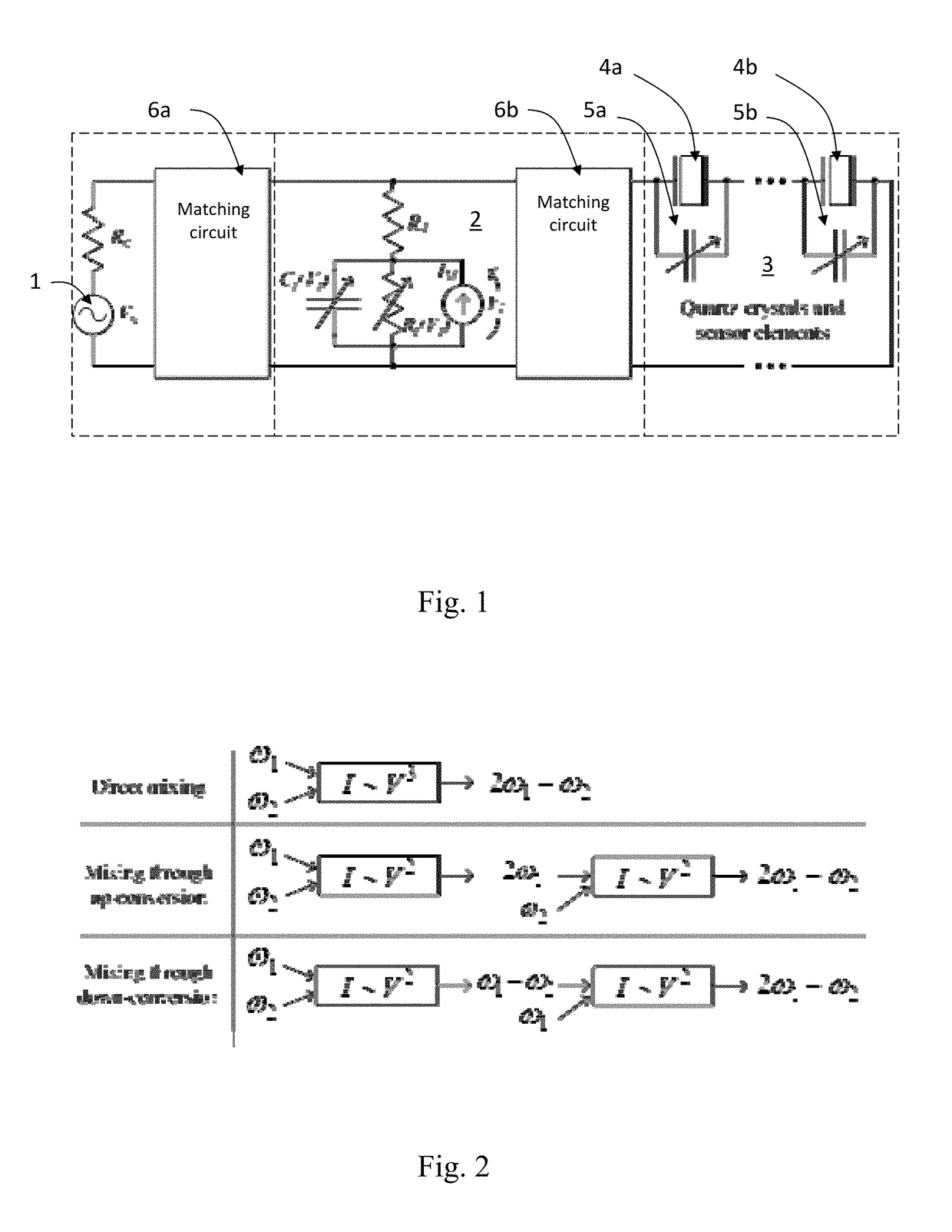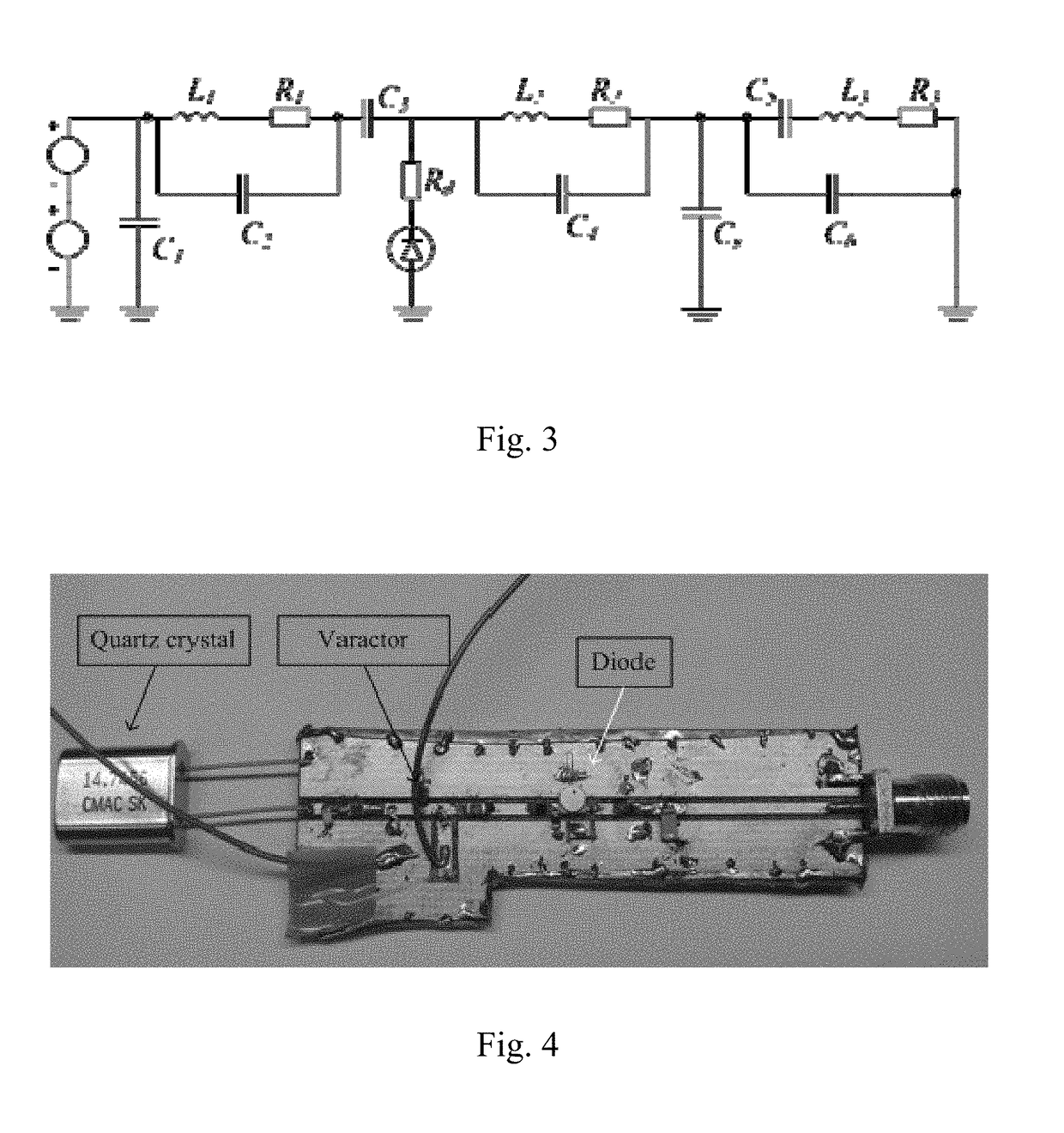Intermodulation sensor platform based on mechanical resonator
a mechanical resonator and intermodulation technology, applied in the direction of instruments, resonant frequency, measurement devices, etc., can solve the problems of power-limited read-out distance of digital sensors, limited application possibilities of piezoelectric materials for sensing elements, and limited signal-to-noise ratio of analog sensors, etc., to achieve poor electro-acoustic transformation efficiency, read-out distance, and power consumption. increased
- Summary
- Abstract
- Description
- Claims
- Application Information
AI Technical Summary
Benefits of technology
Problems solved by technology
Method used
Image
Examples
Embodiment Construction
[0031]In the intermodulation communication principle, a sensor replies at an intermodulation frequency when it is actuated by a reader device with two sinusoids. The sensor is designed such, that its intermodulation response (that is, the ratio between the voltage at the intermodulation frequency and at a fundamental frequency across the antenna) is affected by a sensor element.
[0032]The sensor comprises, for example, an antenna 1, a mixing element 2, and a low-frequency resonant circuit 3. The mixing element 2 may be a passive mixer. An example of a mixing element 2 is a Schottky diode as shown in FIG. 1. The mixer generates an excitation at the difference frequency, which is applied to the low-frequency resonant circuit 3. The low-frequency resonant circuit 3 comprises a capacitive, resistive, or inductive sensor element.
[0033]An example of the electrical equivalent circuit of the sensor is shown in FIG. 1. The antenna 1 is represented as a voltage source, the Schottky diode is us...
PUM
 Login to View More
Login to View More Abstract
Description
Claims
Application Information
 Login to View More
Login to View More - R&D
- Intellectual Property
- Life Sciences
- Materials
- Tech Scout
- Unparalleled Data Quality
- Higher Quality Content
- 60% Fewer Hallucinations
Browse by: Latest US Patents, China's latest patents, Technical Efficacy Thesaurus, Application Domain, Technology Topic, Popular Technical Reports.
© 2025 PatSnap. All rights reserved.Legal|Privacy policy|Modern Slavery Act Transparency Statement|Sitemap|About US| Contact US: help@patsnap.com



